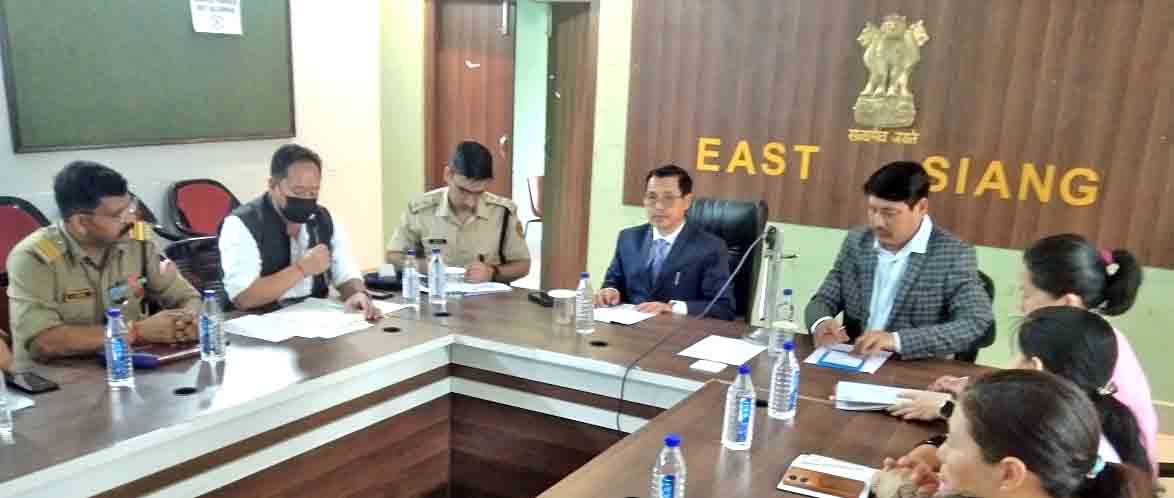-
Former DDSE arrested for illegal appointments in education …
-
Tobacco control cell raids shops near schools, destroys seized…
-
Arunachal Pradesh Raj Bhavan celebrates Gujarat & Maharashtra…
-
Internationally recognized counseling center opens in Ziro
-
Batchmates pay tribute to late Sangay Lhaden, dedicates …
-
Security forces arrest over ground worker of NSCN-KYA
-
Precious Cargo: The Journey of 2 Steel Trunks From…
-
 Governor emphasises on using technology on the ground
Governor emphasises on using technology on the ground
-
AAPSU stops debate on Chakmas at Rajiv Gandhi University
-
 East Siang DA takes stock of monsoon preparedness
East Siang DA takes stock of monsoon preparedness
Arunachal East Lok Sabha MP Tapir Gao’s written representation to the DoNER Minister seeking relaxation in minimum height requirement for the IPS aspirants from Arunachal Pradesh has been very persuasive and packed with cogent arguments. Earlier, the state’s Chief Minister Pema Khandu also apprised the Centre about the issue and sought a change in the rule which is depriving the tribal applicants of Arunachal from competing for the coveted career choice. It is surprising that the issue hasn’t been pursued seriously by the state in the past resulting in the existence of an irrational and unjustified clause in the rule book, until the case came to limelight. It will not require a mammoth exercise for the ‘course correction’. What is required is an approach with a logical bent of mind.
Ojing Dameng who ranked 644th in the Civil Services Examination, 2017 must be thanked for his dogged perusal in the rectification of the ‘flaw’ which hitherto has remained unattended. Despite being a qualified doctor he aspired to join the IPS and was placed in the second position of the provisional list of IPS officers in the Scheduled Tribes category. However, the medical examination conducted by the Central Standing Medical Board (CSMB) found him ineligible for the IPS since he has a height of 162.5, 2.5 cm less than the required minimum height of 165 cm for male candidates. His subsequent challenge of the decision at the Central Administrative Tribunal (CAT) in August 2018 with the argument that he deserves to be allowed the same relaxation in height (minimum 160 cm for male applicants) available to the Gorkhas, Assamese, Kumaonis, Nagas, Garhwalis, etc. But the CAT felt that he did not belong to these communities which would make him eligible for height relaxation for the IPS. Apparently, CAT’s rejection will seem okay since it’s technically not incorrect. However, the historical perspective of the All India Services Act which was framed way back in 1951 needs to be taken into account and more specifically, Arunachal Pradesh’s status at that time. The state was then under Assam administration and when the benefit of height relaxation under the act was extended to the Assamese, by default, it also covered all the tribes of Arunachal also. The state came into existence as a Union Territory in 1972 and attained statehood only in 1987. Going by this logic, it means that the state’s aspirants should continue to receive the said relaxation. However, the Act was not amended suitably to include the Arunachalees along with the eligible others (Gorkhas, Assamese, Kumaonis, Nagas, Garhwalis, etc.) after attainment of the statehood and it’s exactly here the problem has its origin.
Arunachal’s arguments are perfect and the issue can be solved easily if the intention is genuine.

Kenter Joya Riba
(Managing Editor)She is a graduate in Science with post graduation in Sociology from University of Pune. She has been in the media industry for nearly a decade. Before turning to print business, she has been associated with radio and television.
Email: kenterjoyaz@easternsentinel.in / editoreasternsentinel@gmail.com
Phone: 0360-2212313

